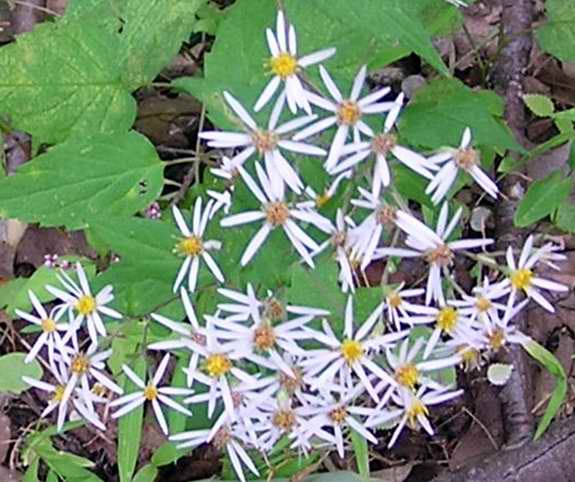|
Common Name: White Wood Aster (from the Greek aster meaning star, in reference to the star-like appearance of the flower), Christmas daisies (they bloom late in the year). Scientific Name: Aster divaricatus (from Latin divarico, to spread out for its tendency to propagate in an area); also Symphyotrichum divaricatum and Eurybia divaricatus
Potpourri: The genus Aster contains about 300 separate species, of which some 50 are indigenous to the Appalachian Mountains. Recent research using DNA and morphology revealed that New World asters were distinct from Eurasian asters at the generic level and that separate genera were necessary to characterize their evolutionary history. Among these are Eurybia and Symphyotrichum. As A. divaricatus is one of the few asters that thrives in dry shady places, it is a threatened species, its habitat also being ideal for the invasive Garlic Mustard (Alliaria petiolata) which drives the native plant away.
The star-burst efflorescence of the aster is not just reflected in its name. Greek legend attributes the aster to star dust that fell from Virgo's eyes as she looked down from heaven and wept. Asters were sacred flowers, and were accordingly made into wreathes and placed on the altars of the temples to their gods and goddesses. Associated with elegance, they were amulets of love and considered the herb of Aphrodite.
The aster has been used in a variety of ways by different cultures. In France, where they are known as the "eye of Christ" and in Germany, where they are known as "starworts," asters were burned to keep away evil spirits. This practice was followed by early American colonists according to their heritage. Native Americans smoked the roots of the aster in a pipe to attract game, as the smoke had an aroma similar to that of deer. |
